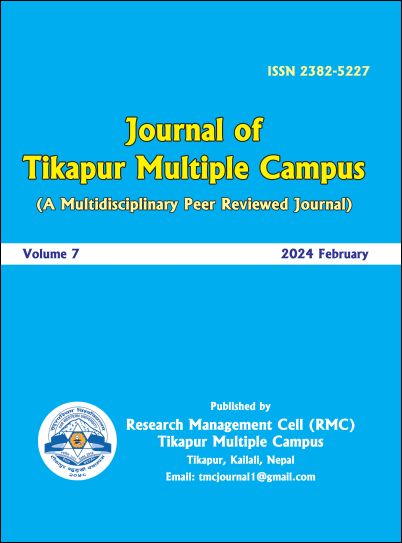Lived Experiences of Faculty with Disabilities in Higher Education: A Hermeneutic Phenomenological Method
DOI:
https://doi.org/10.3126/jotmc.v7i1-2.63140Keywords:
Environment, disability studies, disabled faculty, executives’ attitude, lived experienceAbstract
The number of faculty members with disabilities has increased nowadays in the university because of the inclusive recruitment policy. The faculties with disabilities still struggle with the disable-unfriendly environments in universities, and they are excluded from the research fields in Nepal although there are some research done on school children with disabilities and people with disabilities in family and society. University faculty members with disabilities need to be studied in order to truly address the real-life problems. This study explores the lived experiences of faculty members with disabilities perceived at Tribhuvan University, Nepal. A hermeneutic phenomenological research method within qualitative approach was exploited. Purposive sampling technique was used to select five teachers with disabilities in the study. Disability studies theory was used as a theoretical tool. The major findings are that the disabled faculty encountered mainly infrastructure/physical structure barriers, university policy and practice barriers, the university executives’ (un)conscious/ (un)intentional ignorance and attitude barriers in the campuses. The teachers with vision impairment and motor impairment endured through difficulty of disable-unfriendly physical structures, university policy and practices. The findings mean the university environments were unfriendly, hostile and adverse to the disabled faculty. This study may motivate the executives to modify the policy, practices and attitudes to the disabled ones at the university which may impact the quality of the university.
Downloads
Downloads
Published
How to Cite
Issue
Section
License

This work is licensed under a Creative Commons Attribution-NonCommercial 4.0 International License.
This license enables reusers to distribute, remix, adapt, and build upon the material in any medium or format, so long as attribution is given to the creator. The license allows for commercial use.




